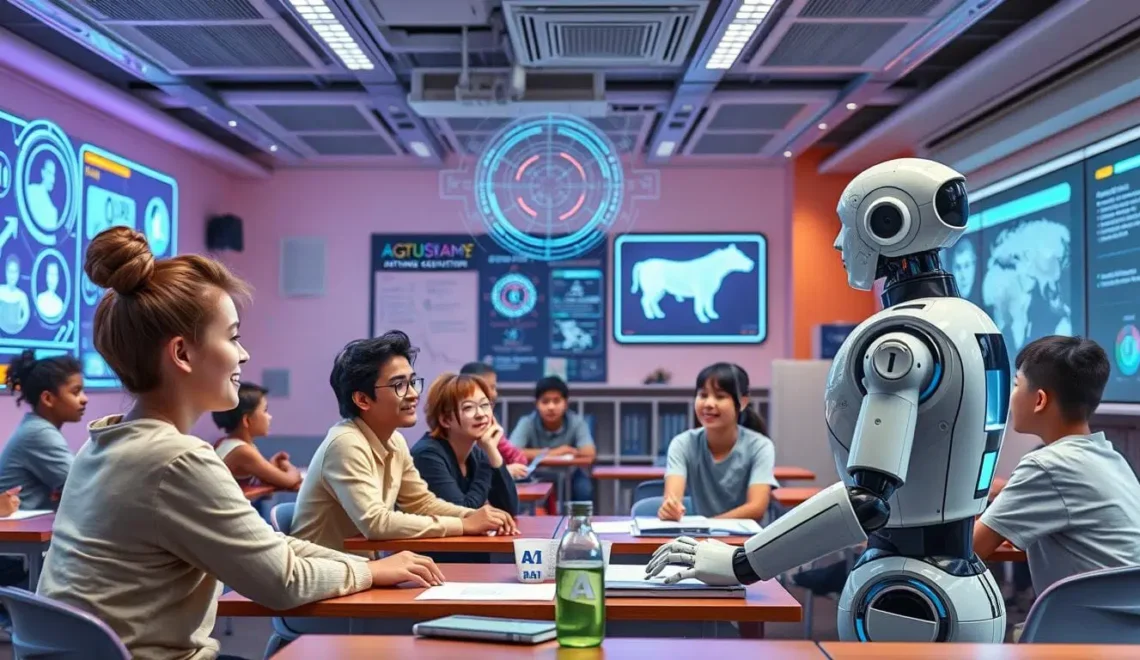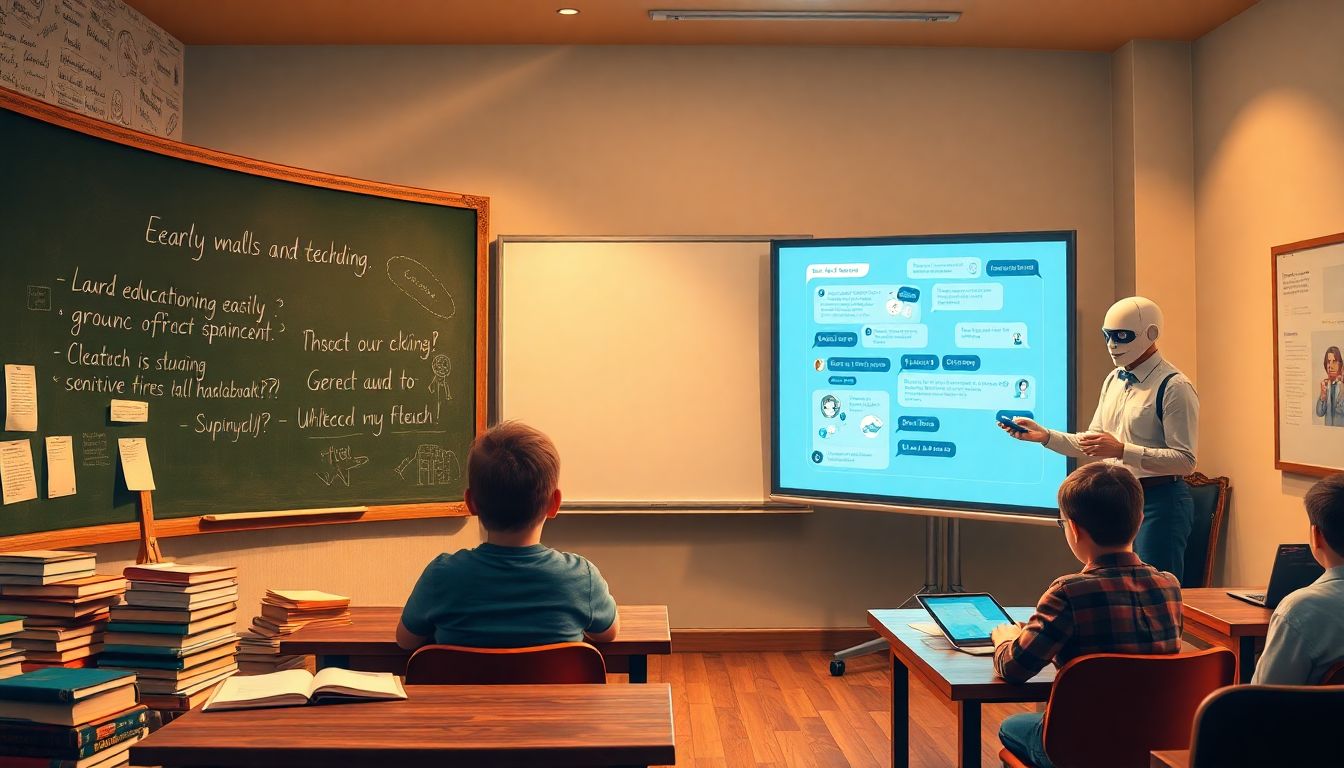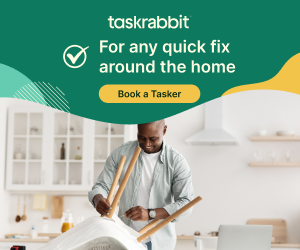
AI Chatbots Reshape the Future of Learning
AI chatbots are revolutionizing education by offering personalized, on-demand learning experiences like never before. From tutoring students in real time to helping educators streamline their workflows, these intelligent assistants are making knowledge more accessible, interactive, and engaging. In this article, we explore how AI chatbots are reshaping the future of learning for students, teachers, and institutions alike.
Why the Shift from Classrooms to Chatbots Is Gaining Momentum

-
The traditional classroom model, while effective for generations, is facing a digital transformation in 2025.
-
Artificial Intelligence, particularly in the form of chatbots, is now central to education strategies across the globe.
-
With increased personalization, real-time support, and cost efficiency, AI tutors are bridging learning gaps faster than ever.
-
Educational institutions, governments, and edtech startups are all embracing this tech-driven approach.
Understanding the AI Tutor Revolution
-
AI tutors are digital systems powered by natural language processing and machine learning.
-
They simulate human tutor interactions and adapt to individual student needs.
-
Unlike human tutors, chatbots are available 24/7 and can serve millions simultaneously.
-
These tools are not replacing educators but enhancing and scaling their capabilities.
Benefits of AI Chatbots in Modern Learning

-
Instant feedback on assignments and quizzes improves learning efficiency.
-
Adaptive learning paths cater to different paces, styles, and attention spans.
-
Gamified learning through chatbot interactions keeps students engaged.
-
Cost-effective tutoring—AI tools offer affordable alternatives to expensive private tutoring.
-
Multilingual support helps break down barriers in non-native language instruction.
-
Accessibility for students with disabilities through voice, visual, and text customization.
From the Physical Classroom to Digital Dialogue
-
Classrooms are evolving from four walls to interactive ecosystems powered by chatbots.
-
Hybrid learning models now rely on AI for homework help, study planning, and concept reinforcement.
-
Teachers in classrooms use AI tutors as co-instructors to personalize attention.
-
AI bridges the gap between school hours and after-school learning support.
-
Students who are shy or anxious in traditional classroom settings benefit from private AI interactions.
Real-World Use Cases of AI Tutors

-
Duolingo: Uses chatbots to simulate language conversations with learners at any level.
-
Socratic by Google: Offers AI-powered help by solving problems and explaining concepts with visuals.
-
Khanmigo (Khan Academy): An AI assistant that answers questions, reviews essays, and explains STEM topics.
-
Byju’s: India’s leading edtech uses AI chatbots to guide personalized learning journeys.
-
Carnegie Learning: Uses adaptive learning technology for math and literacy based on AI feedback loops.
What Makes Chatbots Ideal for Modern Students?
-
24/7 Availability – Unlike human tutors, AI chatbots are always online.
-
Non-judgmental environment – Students feel safe asking “basic” questions without fear.
-
Quick answers – Reduces frustration and keeps study momentum going.
-
Interactive tone – Chatbots use friendly language that mimics peer tutoring.
-
Scalable for classrooms – One AI tutor can serve hundreds without compromising quality.
How Teachers Are Using AI Chatbots in the Classroom
-
Automating Q&A during or after lectures to handle common student queries.
-
Supporting lesson planning by generating topic ideas, quizzes, and worksheets.
-
Tracking student performance by analyzing chatbot interaction data.
-
Reducing administrative load through auto-grading and progress reports.
-
Personalized intervention by identifying students who need extra support.
AI Chatbots and Student Personalization
-
Chatbots analyze individual student behavior, quiz scores, and engagement patterns.
-
Based on this, they suggest learning modules, videos, and revision cycles.
-
This level of customization is difficult in a standard classroom setting.
-
AI chatbots can even adjust their language complexity depending on learner proficiency.
-
This builds a more efficient and emotionally supportive learning experience.
Challenges in Replacing Traditional Classrooms with Chatbots
-
Not all learners are equally tech-savvy, especially younger students or underserved populations.
-
Internet and device access remains a barrier in rural or low-income regions.
-
Human connection and emotional support in classrooms cannot be fully replicated.
-
Some students misuse chatbots for shortcuts rather than genuine learning.
-
Educators fear over-dependence on technology might reduce critical thinking.
Security and Ethical Considerations
-
Student data privacy must be protected—AI chatbots collect sensitive performance data.
-
Schools must ensure compliance with regulations like FERPA, GDPR, etc.
-
Developers must avoid algorithmic bias that may disadvantage certain learner groups.
-
Content accuracy and source verification must be built into chatbot systems.
-
Ethical design is crucial to prevent manipulation or misinformation in education.
What Education Will Look Like in 2030
-
AI chatbots will likely become standard learning companions from grade school to grad school.
-
Classrooms will shift toward facilitator roles, with teachers guiding AI-supported learners.
-
Virtual classrooms powered by avatars and holograms may integrate chatbot guidance.
-
Learning will be increasingly demand-driven and flexible—students choosing what, when, and how.
-
Lifelong learning platforms will blend formal education with AI-driven micro-courses and certifications.
AI Chatbots in Education Statistics (2025)
-
Over 70% of global edtech platforms now integrate some form of AI tutor or chatbot.
-
Schools using AI support tools report 30–40% faster concept mastery.
-
Chatbot-based homework help reduces failure rates in math and science by up to 25%.
-
The global market for AI in education is projected to exceed $20 billion by 2027.
-
Chatbots handle over 1 billion student interactions monthly across platforms like Khan Academy and Duolingo.
Famous Educators & Institutions Embracing AI Chatbots

-
Sal Khan (Khan Academy): Advocates for AI assistants like “Khanmigo” in every student’s toolkit.
-
Stanford University: Incorporating AI bots in course discussions and language labs.
-
University of Helsinki: Offers free public courses on how AI chatbots work in education.
-
Indian government’s “AI for All” initiative includes chatbot learning support in rural schools.
-
UNESCO encourages ethical adoption of AI tutors in primary and secondary education.
Tips for Students Using Chatbots Effectively
-
Use AI tutors as support tools, not as shortcuts.
-
Ask open-ended questions to get deeper explanations.
-
Combine chatbot help with classroom notes and textbooks.
-
Review summaries and flashcards created by chatbots before exams.
-
Track your learning analytics provided by chatbot dashboards.
How Parents Can Support AI-Based Learning
-
Introduce kids to age-appropriate chatbot learning apps.
-
Set healthy screen-time boundaries during AI-assisted study sessions.
-
Review chatbot activity reports to ensure learning is happening.
-
Talk with teachers about which platforms are being used in the classroom.
-
Encourage children to discuss both AI answers and human insights for a balanced view.
Final Thoughts: The Future of Chatbots and Classrooms
-
AI chatbots are not replacing the classroom—they’re redefining it.
-
The best learning happens when classroom wisdom meets chatbot precision.
-
Education in 2025 is about partnerships—between students, teachers, and intelligent systems.
-
Chatbots are just one part of the bigger AI revolution, but in education, their impact is transformative.
-
As classrooms go digital, chatbots will be the tireless tutors every learner deserves.















